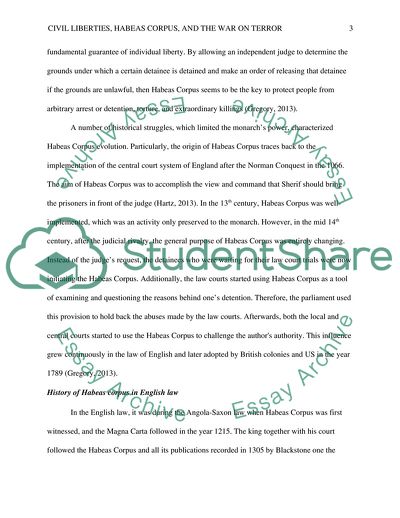Cite this document
(US Government the Primary Purpose of the Habeas Corpus Essay Example | Topics and Well Written Essays - 1500 words, n.d.)
US Government the Primary Purpose of the Habeas Corpus Essay Example | Topics and Well Written Essays - 1500 words. https://studentshare.org/history/1815806-the-writ-of-habeas-corpus-and-the-war-on-terror
US Government the Primary Purpose of the Habeas Corpus Essay Example | Topics and Well Written Essays - 1500 words. https://studentshare.org/history/1815806-the-writ-of-habeas-corpus-and-the-war-on-terror
(US Government the Primary Purpose of the Habeas Corpus Essay Example | Topics and Well Written Essays - 1500 Words)
US Government the Primary Purpose of the Habeas Corpus Essay Example | Topics and Well Written Essays - 1500 Words. https://studentshare.org/history/1815806-the-writ-of-habeas-corpus-and-the-war-on-terror.
US Government the Primary Purpose of the Habeas Corpus Essay Example | Topics and Well Written Essays - 1500 Words. https://studentshare.org/history/1815806-the-writ-of-habeas-corpus-and-the-war-on-terror.
“US Government the Primary Purpose of the Habeas Corpus Essay Example | Topics and Well Written Essays - 1500 Words”. https://studentshare.org/history/1815806-the-writ-of-habeas-corpus-and-the-war-on-terror.


